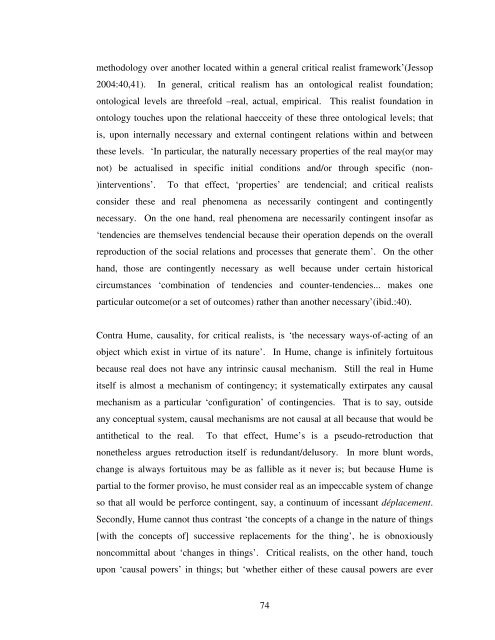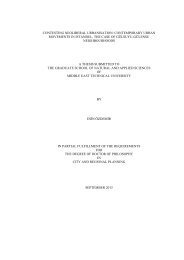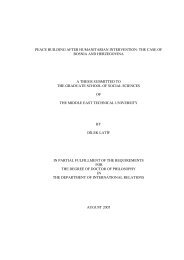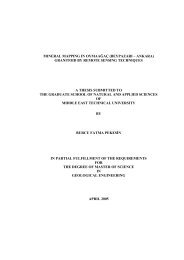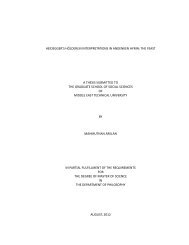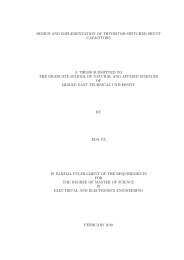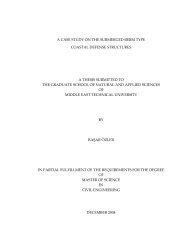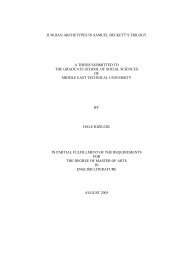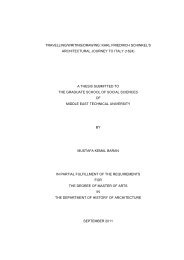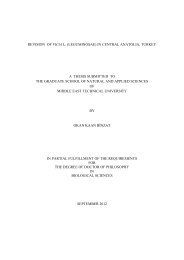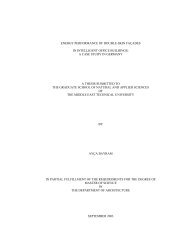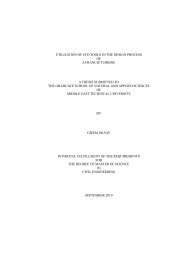View Original - Middle East Technical University
View Original - Middle East Technical University
View Original - Middle East Technical University
You also want an ePaper? Increase the reach of your titles
YUMPU automatically turns print PDFs into web optimized ePapers that Google loves.
methodology over another located within a general critical realist framework’(Jessop<br />
2004:40,41). In general, critical realism has an ontological realist foundation;<br />
ontological levels are threefold –real, actual, empirical. This realist foundation in<br />
ontology touches upon the relational haecceity of these three ontological levels; that<br />
is, upon internally necessary and external contingent relations within and between<br />
these levels. ‘In particular, the naturally necessary properties of the real may(or may<br />
not) be actualised in specific initial conditions and/or through specific (non-<br />
)interventions’. To that effect, ‘properties’ are tendencial; and critical realists<br />
consider these and real phenomena as necessarily contingent and contingently<br />
necessary. On the one hand, real phenomena are necessarily contingent insofar as<br />
‘tendencies are themselves tendencial because their operation depends on the overall<br />
reproduction of the social relations and processes that generate them’. On the other<br />
hand, those are contingently necessary as well because under certain historical<br />
circumstances ‘combination of tendencies and counter-tendencies... makes one<br />
particular outcome(or a set of outcomes) rather than another necessary’(ibid.:40).<br />
Contra Hume, causality, for critical realists, is ‘the necessary ways-of-acting of an<br />
object which exist in virtue of its nature’. In Hume, change is infinitely fortuitous<br />
because real does not have any intrinsic causal mechanism. Still the real in Hume<br />
itself is almost a mechanism of contingency; it systematically extirpates any causal<br />
mechanism as a particular ‘configuration’ of contingencies. That is to say, outside<br />
any conceptual system, causal mechanisms are not causal at all because that would be<br />
antithetical to the real. To that effect, Hume’s is a pseudo-retroduction that<br />
nonetheless argues retroduction itself is redundant/delusory. In more blunt words,<br />
change is always fortuitous may be as fallible as it never is; but because Hume is<br />
partial to the former proviso, he must consider real as an impeccable system of change<br />
so that all would be perforce contingent, say, a continuum of incessant déplacement.<br />
Secondly, Hume cannot thus contrast ‘the concepts of a change in the nature of things<br />
[with the concepts of] successive replacements for the thing’, he is obnoxiously<br />
noncommittal about ‘changes in things’. Critical realists, on the other hand, touch<br />
upon ‘causal powers’ in things; but ‘whether either of these causal powers are ever<br />
74


